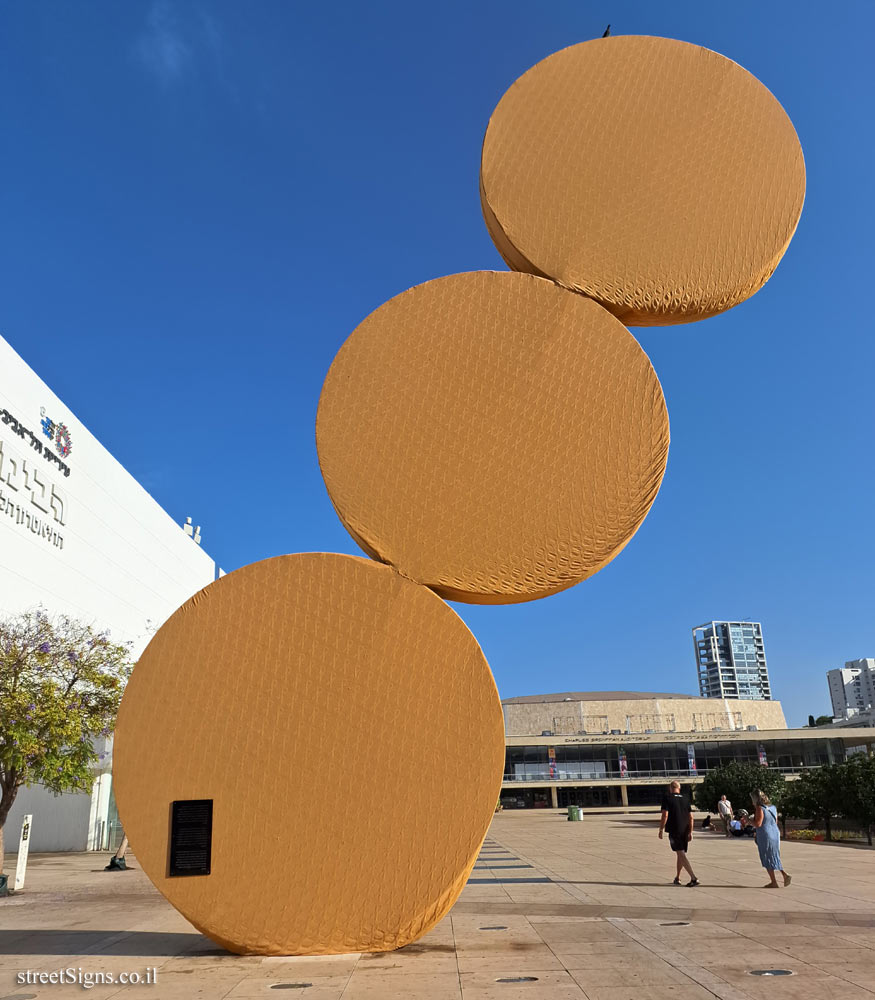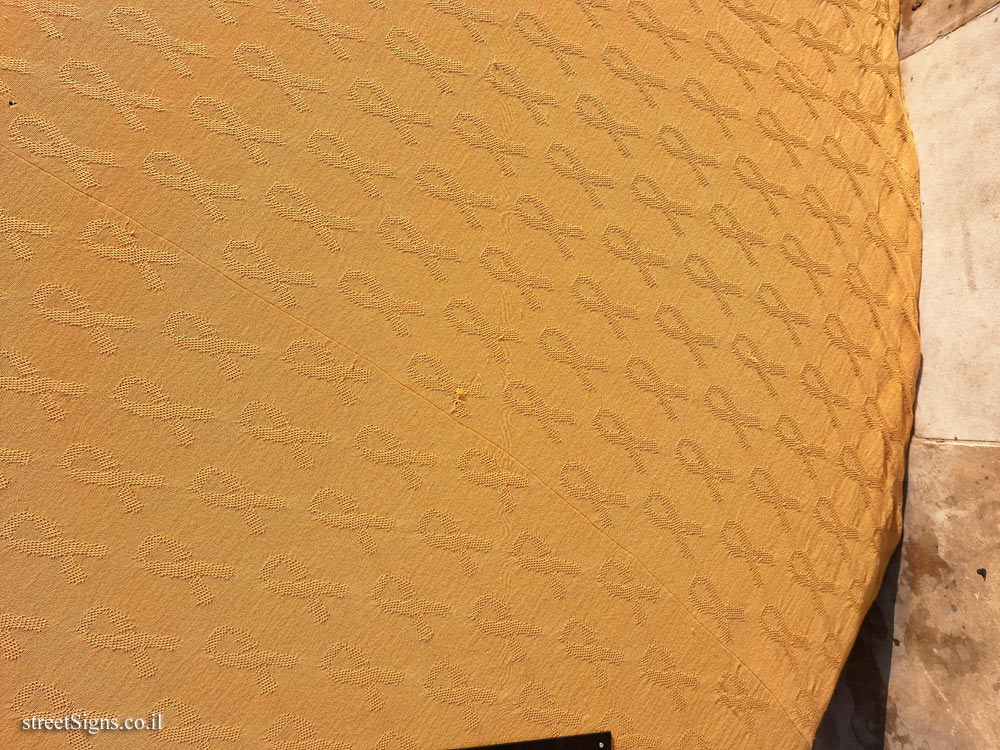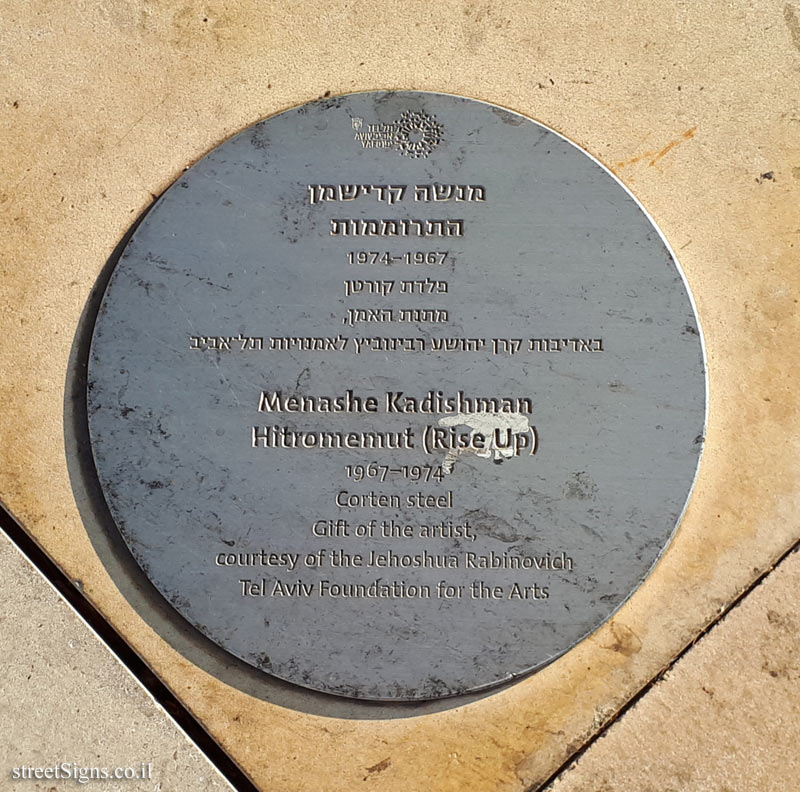The sign is part of the protest displays intended to work for the release of the hostages of the Hamas surprise attack on October 7, 2023. An attack on the settlements surrounding Gaza, in which Israel was surprised. In the attack, more than 1,100 people from Israel were killed and 251 were kidnapped to the Gaza Strip. At the time the sign was photographed, 101 abductees remained (the others were returned in a deal brokered mainly by the United States and other parties, released by the IDF, accidentally killed by IDF soldiers, or murdered by their captors).
The statue is covered with a yellow cloth and on it the "yellow ribbon" symbolizing prisoners of war, was photographed on the same day
 Click for a larger image
Click for a larger image Zooming in, you can see the yellow ribbon embroidered across the fabric
 Click for a larger image
Click for a larger image Details about the statue in normal days, which is one of the hallmarks of the city of Tel Aviv, can be found on the following sign
 Click for sign's details Translation of the text on the sign
Click for sign's details Translation of the text on the sign:
Malki Shem Tov, the father of Omer, one of the 101 abductees held in Gaza, approached Noa Klegsbald, a multidisciplinary artist who has been volunteering in the creative department of the headquarters since its inception, with a request to create a project for Rosh Hashanah that would bring a message of hope and unity. In the days when public attention is directed to the north, Klagsblad wanted to ensure that the abductees in Gaza are not forgotten. She chose to link Menashe Kadishman’s sculpture "Hitromemut" to the families’ struggle.
"Hitromemut" (Rise Up), a central sculpture by Kadishman located in the HaBima Square in Tel Aviv, is a symbol of resilience and optimism. Its metallic discs, which seem to rise up against the counterforce, represent the power to overcome obstacles. Just as the discs rely on each other, Israeli society is also required to unite and stand together in the struggle for the release of the abductees. The name "Hitromemut" symbolizes the hope and aspiration to rise above the pain.
To put the idea into practice, Klagsblad turned to Miki Kaidar, head of the textile design department at Shenkar, for cooperation. Miki, a textile designer resident of Kibbutz Ra’im, formed a dedicated team for the project. Producing a lattice of this size is an extraordinary challenge both from an engineering and design perspective. Together, they wrapped the statue in yellow netting, with the symbol of the abductees woven into it. The project was done with the support and approval of the Kadishman family.
Learn about:

 Click for a larger image
Click for a larger image  Click for a larger image
Click for a larger image  Click for sign's details
Click for sign's details